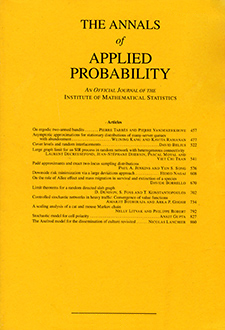Abstract
We consider a repulsion–attraction model for a random polymer of finite lengthin
We show that for
In dimension
It remains open to determine the behavior for
Citation
Achim Klenke. Remco Van Der Hofstad. "Self-Attractive Random Plymers." Ann. Appl. Probab. 11 (4) 1079 - 1115, November 2001. https://doi.org/10.1214/aoap/1015345396
Information





